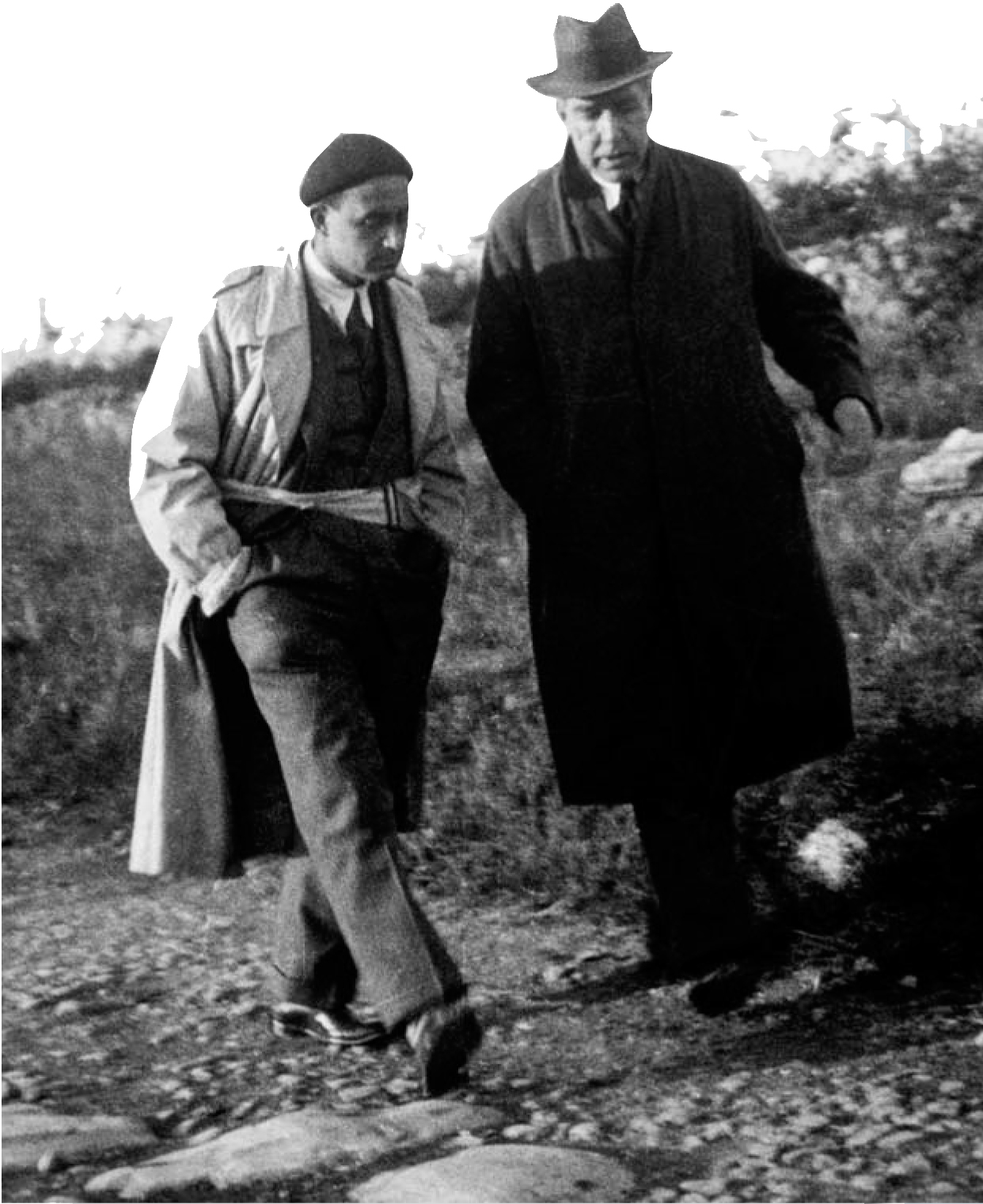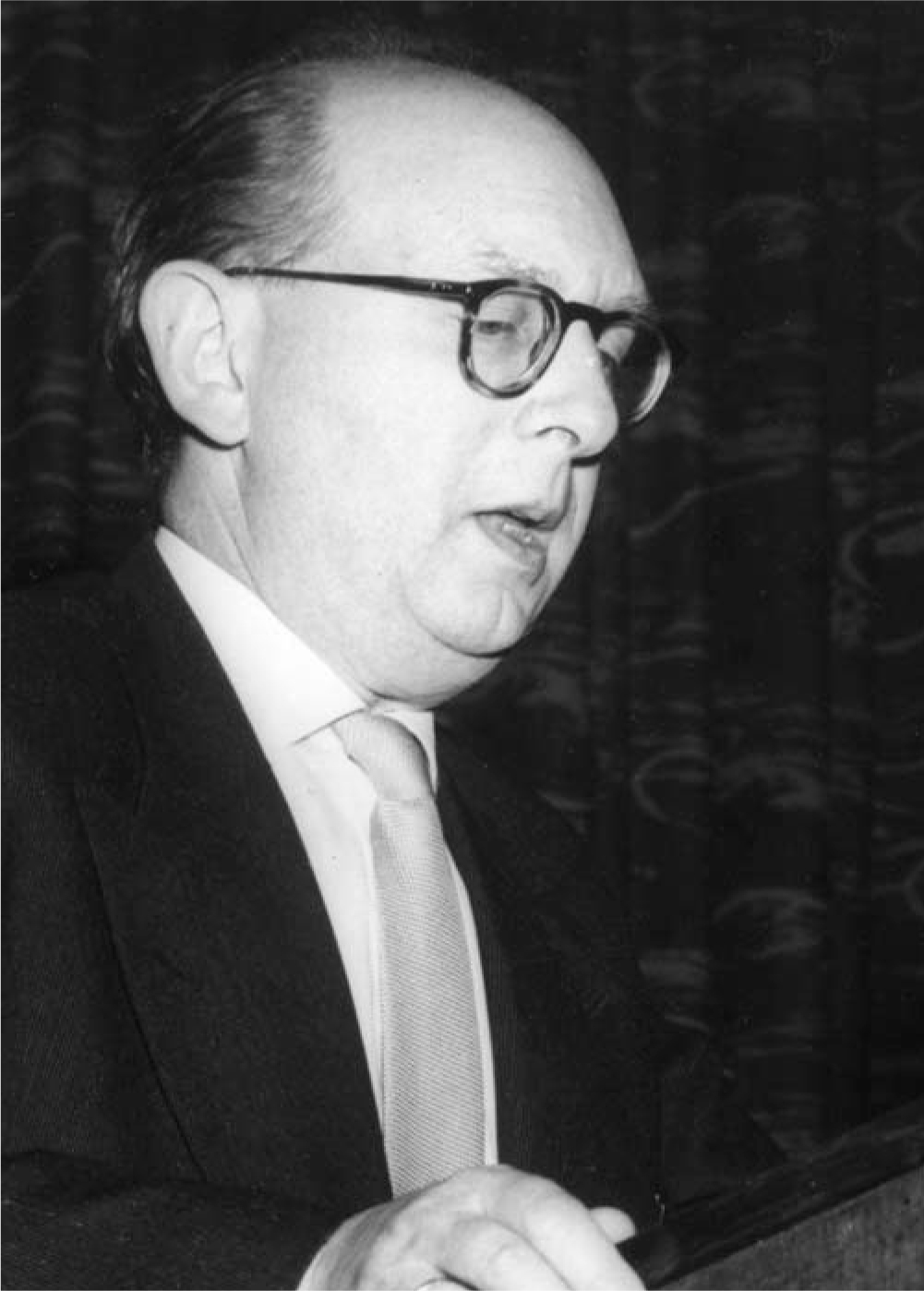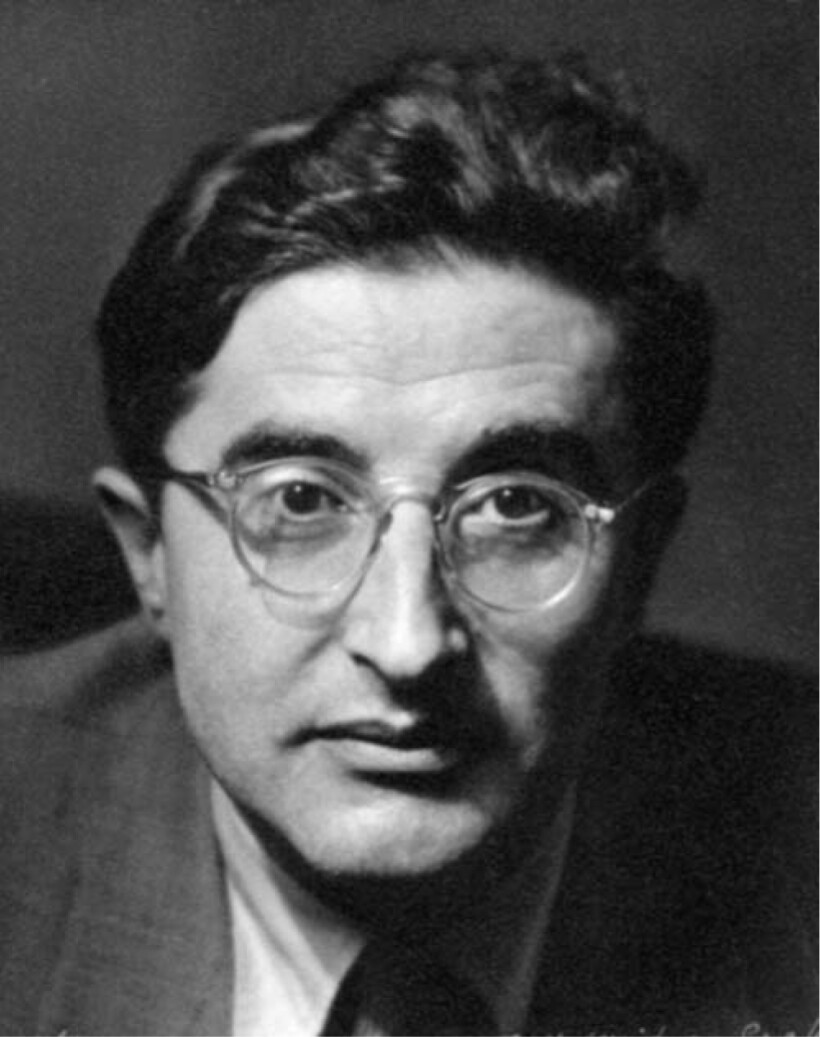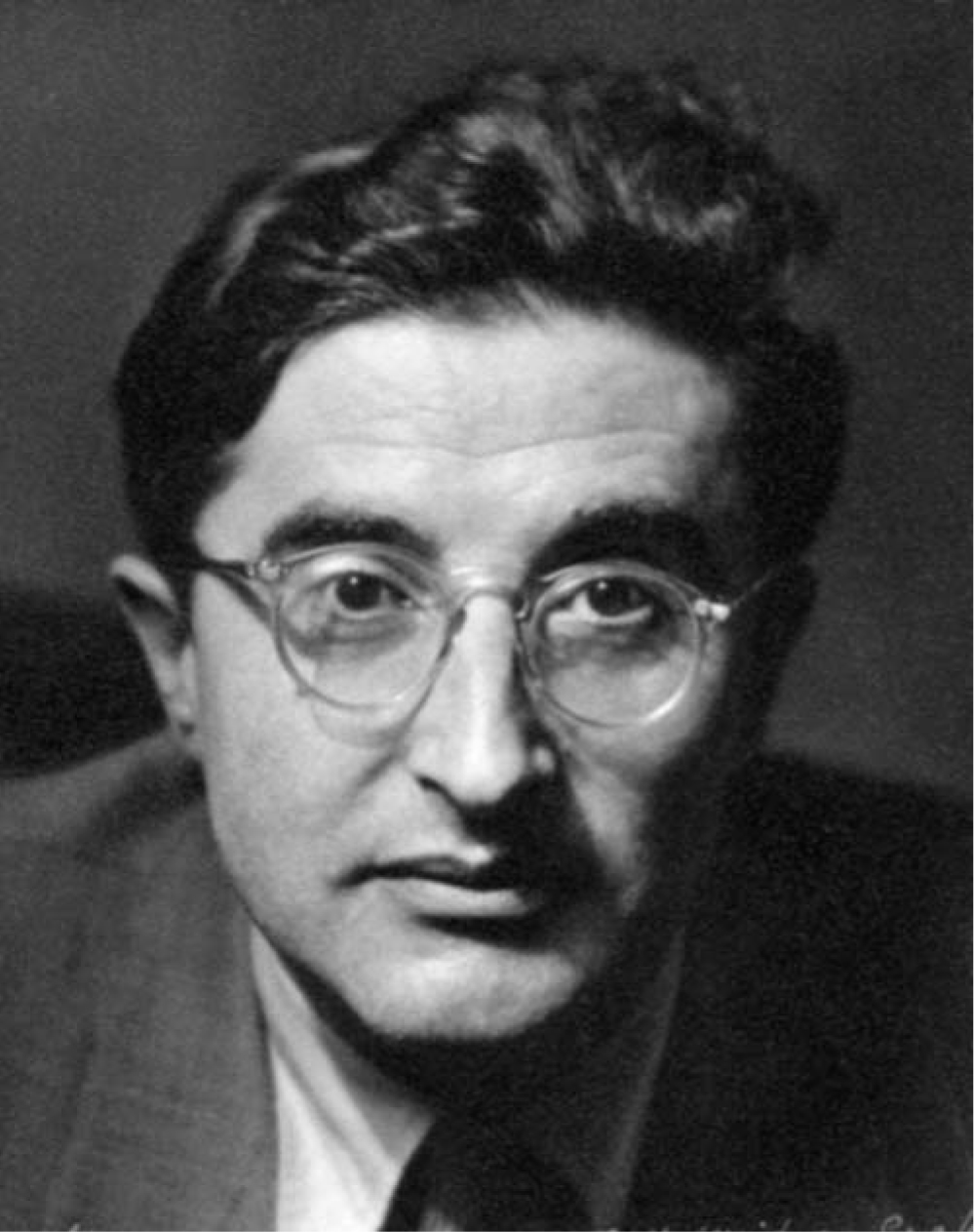Mechanism of fission
DOI: 10.1063/1.3120894
From November 1967, pages 49-52
In early January 1939 the Swedish-American liner MS Drottningholm carried a short message across the stormy sea from Copenhagen to New York. This message symbolized the steady transfer of nuclear discoveries from Europe to the US that had been going on during the Hitler years.
Although these transfers were fateful for the US and the rest of the world, the act of relaying this particular message was simple: a few words spoken by Otto Frisch to Niels Bohr on the pier in Copenhagen and a few words spoken to Enrico Fermi and me by Bohr on the pier in New York. As a junior participator in the events that occurred then and in subsequent months, I shall relate the activities that led to the publication of a Physical Review paper by Bohr and me. In this paper we summarized the thoughts expressed in the message: the liquid-drop model that Frisch had applied to the mechanism of fission and the determinations of packing fraction that Lise Meitner considered when arriving at the first estimate of energy release in fission.
No one looking at such a novel process at that time could fail to call on everything he knew about nuclear physics to seek an interpretation. Fortunately the key ideas for unraveling the puzzle had already been developed. It may be appropriate to recall what had been learned about nuclear physics in the preceding half a dozen years.

Strolling thinkers, Fermi (left) and Bohr, are well known for their important applications and expansions of early ideas of nuclear fission.

Clues to the answer
1933 was a fruitful year for someone like me, who was just earning his doctor’s degree. It was the year of the discovery of the neutron and Werner Heisenberg’s great paper on the structure of nuclei built out of neutrons and protons. These discoveries made one feel that he might soon know as much about the nucleus as he already knew about the atom.
Encouraged by the vision that inspired so many young men, me included, at that time, I spent 1933–34 working with Gregory Breit, to whose insights I owe so much. He and the group of which I soon found myself a member accepted almost unconsciously the model of the nucleus of that day: neutrons and protons moving in a common self-consistent potential, closely analogous to the electric potential of the atom. “Unconscious” our acceptance of the model was, yes; but also shadowy. None of us took it too literally, especially not Breit, with his caution and insight. Thus he was always willing to consider alpha particles in the nucleus as well as neutrons and protons when that point of view made sense in considering a particular reaction. Breit also directed especial attention to areas of investigation as nearly free as possible of model-dependent issues. Thus much work was done on the penetration of charged particles into nuclei and how the cross section for a nuclear reaction depends on energy. The analysis of scattering processes in terms of phase shifts also received much attention.
With Breit’s warm endorsement I spent the following year at Niels Bohr’s institute in Copenhagen. Here I was initiated into the study of many new ideas, but nothing was more impressive in nuclear physics than the message that [Christian] Møller brought back during the spring of 1935 from a short Easter visit to Rome: It told of Fermi’s slow-neutron experiments and the astonishing resonances that he had discovered. Every estimate ever made before then indicated that a particle passing through a nucleus would have an extremely small probability of losing its energy by radiation and undergoing capture if the current nuclear model was credible. Yet, directly in opposition to the predictions of this model, Fermi’s experiments displayed huge cross sections and resonances that were quite beyond explanation.
Of course a number of weeks went by before the most significant results of this discovery could be sorted out. Everyone was actively concerned, but no one more so than Bohr, who paced up and down in the colloquium and took a central part in discussions.
Liquid drops
The story of the development of the liquid-drop model and the compound-nucleus picture is a familiar one. What is not so clear and was certainly not evident at the time is the distinction between these ideas: (1) The compound-nucleus model shows, in essence, that the fate of a nucleus is independent of the mechanism by which it has been formed, and (2) the liquid-drop model is, so to speak, a special case of the compound-nucleus model, a particular way of making such a model of nuclear structure reasonable. Bohr proposed that the mean free path of the nucleon is short in relation to nuclear dimensions instead of being long, as assumed in all previous estimates. This new idea made something like a liquid-drop model exceedingly attractive.
No one looking back on the situation from today’s vantage point can fail to be amazed at “the great accident of nuclear physics”—the circumstance that the mean free path of particles in the nucleus is neither extremely short compared with nuclear dimensions (as assumed in the liquid-drop picture) nor extremely long (as assumed in the earlier model) but of an intermediate value. Moreover, all the marvelous detail of nuclear physics turns out to depend in such a critical way on the value of this parameter. As Aage Bohr and Ben Mottelson have taught us in recent years, no one could have predicted the precise one among many alternative regimes in which the phenomenology would actually lie from any advance estimate of the mean free path. Only observation could suffice! Knowing as little as one did in 1935 about the value of this decisive parameter, still less about its criticality one had no option but to explore with all vigor the idea that the mean free path is very short.
The development of the liquid-drop model, which was applied to a variety of processes, took place in the hands of Fritz Kalckar and Niels Bohr in 1935–37. They applied it to a variety of processes. At the center of every such application stood the idealization of the compound nucleus, that is, the concept that a nuclear reaction occurs in two well-separated stages: First, the particle arrives in the nucleus and imparts an excitation; then in some way the nucleus uses that energy for radiation, neutron or alpha-particle emission, or any other competing process.
Bohr brings the news
The message that Frisch gave Bohr as Bohr left Copenhagen opened up a new domain of application for this concept of the compound nucleus. By the time Bohr had arrived in New York he had already recognized that fission is one more process in competition with neutron reemission and gamma-ray emission. Four days after his arrival he and [Leon] Rosenfeld finished a paper summarizing this general picture of fission in terms of formation and breakup of the compound nucleus.

Rosenfeld, with Bohr, summarized the idea of fission.

Rosenfeld had originally accompanied Bohr to Princeton for several months of work on the problem of measurement in quantum electrodynamics. During Rosenfeld’s Princeton sojourn Bohr gave less than half a dozen lectures on that issue. Nevertheless, that and many other questions conspired to take much of his time. No one could go into his office without seeing the long list of duties and people he had to give time to. That list made it easy to appreciate the pleasure with which he came into my office to discuss the work that we had under way. We were trying to understand in detail the mechanism of fission and, not least, analyze the barrier against fission and the considerations that determine its height.
First of all, of course, we had to formulate the very idea of a threshold or barrier. How can there even be any barrier according to the liquid-drop picture? Is not an ideal fluid infinitely subdivisible? And therefore cannot the activation energy required to go from the original configuration to a pair of fragments be made as small as one pleases? We obtained guidance on this question out of the theory of the calculus of variations in the large, maxima and minima, and critical points. This subject we absorbed by osmosis from our environment, so thoroughly charged over the years by the ideas and results of Marston Morse. It became clear that we could find a configuration space to describe the deformation of the nucleus. In this deformation space we could find a variety of paths leading from the normal, nearly spherical configuration over a barrier to a separated configuration. On each path the energy of deformation reaches a highest value. This peak value differs from one path to another. Among all these maxima the minimum measures the height of the saddle point or fission threshold or activation energy for fission.
While we were estimating barrier heights and the energy release in various modes of fission, the time came for the fifth annual theoretical physics conference held in Washington on 26 January. Bohr felt a responsibility toward Frisch and Meitner and thought that word of their work-in-progress and their concepts should not be released until they had the proper opportunity to publish, as is the custom throughout science. Even though this was the situation, at the outset Rosenfeld did not appreciate all the complications and demands of Bohr’s position. On the day of Bohr’s arrival in the US, Rosenfeld went down to Princeton on the train. (Bohr had an appointment later that day in New York.) Rosenfeld reported the new discovery at the journal club—the regular Monday night journal club—and of course everybody was very excited. Isidor I. Rabi, who was at the journal club, carried the news back to Columbia, where John Dunning started to plan an experiment.
Nevertheless, even on 26 January, Bohr was reluctant to speak about Frisch’s and Meitner’s findings until he received word that they had actually been published. Fortunately that afternoon an issue of Die Naturwissenschaften, which contained work by [Otto] Hahn and Fritz Strassmann, was handed to him; thus he could tell about it. Of course everybody started his experiments. The first direct physical proof that fission takes place appeared in the newspapers of the twenty-ninth.
Shaping the theory
The analysis of fission led to the theory of a liquid drop and this in turn led back to a favorite love of Bohr, who, for his first student research work, experimented on the instability of a jet of water against breakup into smaller drops. He was quite familiar with the work of John W. Strutt, the third Lord Rayleigh. This work furnished a starting point for our analysis. However, we had to go to terms of higher order than Rayleigh’s favorite second-order calculations to pass beyond the purely parabolic part of the nuclear potential, that is, the part of the potential that increases quadratically with deformation. We determined the third-order terms to see the turning down of the potential. They enabled us to evaluate the height of the barrier, or at least the height of the barrier for a nucleus whose charge was sufficiently close to the critical limit for immediate breakup.
Here we found that we could reduce the whole problem to finding a function f of a single dimensionless variable x. This “fissility parameter” measures the ratio of the square of the charge to the nuclear mass. This parameter has the value 1 for a nucleus that is already unstable against fission in its spherical form. For values of x close to 1, by the power-series development mentioned above one could estimate the height of the barrier and actually give quite a detailed calculation of the first two terms in the power series for barrier height, or f, in powers of (1 − x). The opposite limiting case also lent itself to analysis. In this limit the nucleus has such a small charge that the barrier is governed almost entirely by surface tension. The Coulomb forces give almost negligible assistance in pushing the material apart.
Between this case (the power series about x = 0) and the other case (the power series about x = 1) there was an enormous gap. We saw that it would take a great amount of work to calculate the properties of the fission barrier at points in between. Consequently we limited ourselves to interpolation between these points. In the 28 years since that time many workers have done an enormous amount of computation on the topography of the deformation energy as depicted over configuration space as a “base” for the topographic plot. We are still far from completing the analysis. Beautiful work by Wladyslaw J. Swiatecki and his collaborators at Berkeley has taught us much more than we ever knew before about the structure of this fission barrier and has revealed many unsuspected features for values of x that are remote from the two simple, original limits.
From fission barrier we turned to fission rate. All of us have always recognized that nuclear physics consists of two parts: (a) the energy of a process and (b) the rate at which the process will go on. The compound-nucleus model told us that the rate should be measured by the partial width of the nuclear state in question for breakup by the specified process.
Toward a simpler theory
How could we estimate this width? Happily, in earlier days, several persons in the Princeton community—among them Henry Eyring and Eugene Wigner—had been occupied by the theory of the rates of chemical reactions. Also we derived some useful information from cosmic-ray physics. Who does not recall the many detailed calculations [Carl] Størmer and his associates made on the orbits of cosmic-ray particles in the earth’s magnetic field? Fortunately Manuel Sandoval Vallarta and later workers were able to spare themselves almost all of these details. They had only to employ Liouville’s theorem. It said that the density of systems in phase space remains constant in time.
The same considerations of phase space were equally useful for evaluating the rate of fission. It turned out that we could express the probability of going over the barrier as the ratio of two numbers. One of these numbers is related to the amount of phase space available in the transition-state configuration as the nucleus goes over the top of the barrier. We were forced to think of all the degrees of freedom of the nucleus other than the particular one leading to fission. All these other degrees of freedom are summarized in effect in the internal excitations of the nucleus as it passes over the fission barrier. In classical terms this concept is well defined. It is a volume in phase space completely determined by the amount of energy.
The other quantity appearing in the denominator of the rate-of-fission expression, is linked with the volume of phase space accessible to the compound system. In all the complex motion short of actual passage over the barrier, the ensemble of systems under consideration remains confined to the narrow band of energies, ΔE, defined by the energy of the incident neutron. What counts is this energy interval multiplied with the rate of change of volume in phase space with energy for the undissociated nucleus. The beauty of this derivation is the fact that these classical ideas lend themselves to direct transcription into quantum mechanical terms. Thus the Wentzel-Kramers-Brillouin approximation taught us that volume in phase space determines the number of energy levels. So we concluded that the width—the desired width measuring the probability for fission—is given by a ratio in which the numerator is the number of states accessible to the transition-state nucleus as it is going over the barrier, that is, the number of states of excitation other than motion in the direction of fission. In the denominator appears the spacing between nuclear energy levels, divided by 2π. Thus we had attained the most direct tie with experimentally interesting quantities. The formula that was obtained in this way for the reaction rate, or the level width, applied to a wide class of reactions as well as to fission, and was more general than any that had previously been available in reaction-rate theory. The new formula gave considerable insight into the rate of passage over the fission barrier.
At this particular point it is interesting to note the caution with which Bohr adopted the formula. He would come in every other day or so, and we would go at it for perhaps a half a day, trying out first this approach and then that approach. But his supreme caution was most evident when we wanted to interpret the number of levels accessible in the transition state. Today that number is called “the number of channels,” and we use it as a formula to describe the channel-analysis theory of fission rate. Also we apply similar channel-analysis considerations to other nuclear reactions. But at that time the idea that each one of these individual channels has in principle a definite experimentally observable significance was, for us, of dubious certainty. Still less did we appreciate, until the later work of Aage Bohr, the possibility that each individual channel would have its individual angular distribution from which one could determine the K values of that channel. The cautious phrase that was used in reference to that channel number appears in the following quotation: “It should be remarked that the specific quantum-mechanical effects which set in at and below the critical fission energy may even show their influence to a certain extent above this energy and produce slight oscillations in the beginning of the yield curve, allowing, possibly, a direct determination of the number of channels.” Of course we know how later on in the 1950s these variations were observed by [Richard] Lamphere and [R. E.] Greene and others and how they led to direct measurement of the channel number.
Bohr’s epiphany
The most important part of this Princeton period happened when I was not in direct touch with Bohr. One snowy morning he was walking from the Nassau Club to his office in Fine Hall. As a consequence of a breakfast discussion with George Placzek, who was deeply skeptical of these fission ideas, Bohr began struggling with the problem of explaining the remarkable dependence of fission cross section on neutron energy. In the course of the walk he concluded that slow-neutron fission is caused by 235U and fast-neutron fission by 238U. By the time he had arrived at Fine Hall and he and I had gathered together with Placzek and Rosenfeld, he was ready to sketch out the whole idea on the blackboard. There he displayed the concept that 238U is not susceptible to division by neutrons of thermal energy, nor is it susceptible to neutrons of intermediate energy but only to neutrons with energies of a million electron volts or more. Further, the fission observed at lower energies occurs because 235U is present and has a 1/v cross section for capture. We already knew experimentally that neutrons of intermediate energy undergo resonance capture. And, with the help of simple considerations, we could show that the resonance reaction of neutrons with uranium could not be due to 235U. We concluded this because we knew that the resonance cross section would exceed the theoretical limit given by the square of the wavelength if 235U were responsible for the resonance effect. So the resonance had to be due to 238U, and the very fact that the resonance neutrons did not bring about fission proved that 238U was not susceptible to fission by neutrons of such low energy. Thus if it was not susceptible at that energy, it would certainly not be susceptible at lower energies; consequently low-energy fission must be due to 235U.

Placzek was helpful in formulating theories of fission.

A few days later, on 16 April, Placzek, Wigner, Rosenfeld, Bohr, myself, and others discussed whether one could ever hope to make a nuclear explosive. It was so preposterous then to think of separating 235U that I cannot forget the words that Bohr used in speaking about it: “It would take the entire efforts of a country to make a bomb.” He did not foresee that, in truth, the efforts of thousands of workers drawn from three countries would be needed to achieve that goal.
The theory of fission made it possible to predict in general terms how the cross section for fission would depend upon energy. In Palmer Physical Laboratory, Rudolf Ladenberg, James Kanner, Heinz H. Barschall, and Cletus Van Voorhis, just at the time we were working on the theory, actually measured the cross section of uranium in the region from two million to three million volts—and also the cross section for thorium, all of which fitted in with predictions. The same considerations of course made it possible to predict that plutonium-239 would be fissile. For this application of the theory we are especially indebted to Louis A. Turner. One started on the way that ultimately led to the giant plutonium project having only this theoretical estimate to light and encourage the first steps.
Spontaneous fission offered a most attractive application of these ideas in conjunction with the concept of barrier penetration. Another application dealt with the difference between prompt neutrons and delayed neutrons. In conclusion, nuclear fission brought us a process distinguished from all the other processes with which we ever dealt before in nuclear physics, in that we have for the first time in fission a nuclear transformation inescapably collective in character. In this sense fission opened the door to the development of the collective model of the nucleus in the postwar years.
More about the Authors
John A. Wheeler, one of the first American scientists to concentrate on nuclear fission, worked at the University of Copenhagen in 1934 as a National Research Fellow with Niels Bohr. Wheeler received his PhD in physics at the Johns Hopkins University prior to his research in Copenhagen. In 1938 he joined Princeton University’s physics department.
John A. Wheeler. University of Copenhagen, US .
